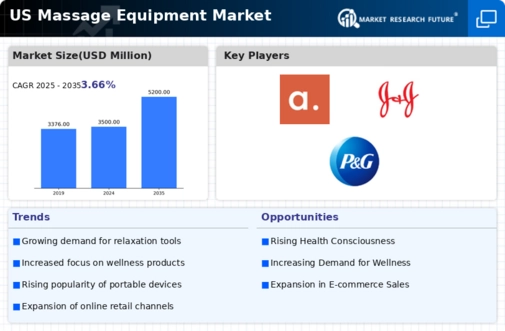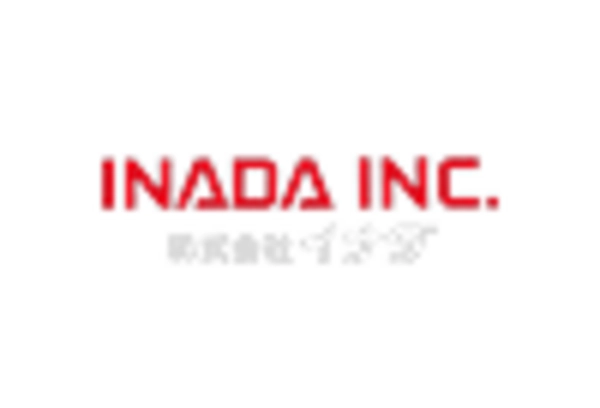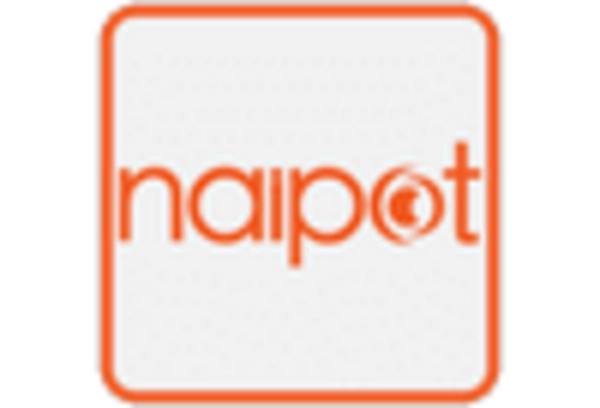Aging Population
The demographic shift towards an older population in the US is significantly influencing the massage equipment market. As the baby boomer generation ages, there is an increasing prevalence of age-related ailments such as arthritis and chronic pain. This demographic is more inclined to seek therapeutic solutions, including massage equipment, to manage their discomfort. Data suggests that by 2030, nearly 20% of the US population will be over 65 years old, creating a substantial market for products designed to cater to their specific needs. The massage equipment market is poised to expand as manufacturers develop targeted solutions that address the unique challenges faced by older adults.
Rising Disposable Income
The increase in disposable income among consumers in the US is a notable driver for the massage equipment market. As economic conditions improve, individuals are more willing to invest in premium wellness products, including high-end massage equipment. Recent data shows that consumer spending on health and wellness products has risen by approximately 15% over the past year. This trend suggests that consumers are prioritizing quality and effectiveness in their purchases. The massage equipment market stands to gain from this economic shift, as higher disposable income allows for greater investment in advanced and luxury massage solutions.
Increasing Health Awareness
The growing awareness of health and wellness among consumers is a pivotal driver for the massage equipment market. As individuals increasingly prioritize self-care and holistic health, the demand for massage equipment has surged. According to recent data, approximately 70% of adults in the US engage in some form of wellness activity, which includes the use of massage equipment. This trend indicates a shift towards preventive health measures, where consumers seek to alleviate stress and muscle tension through regular massage. The massage equipment market is likely to benefit from this heightened focus on personal well-being, as more individuals invest in home massage solutions to enhance their quality of life.
Growth of E-commerce Platforms
The rise of e-commerce platforms has transformed the way consumers purchase massage equipment, serving as a crucial driver for the market. With the convenience of online shopping, consumers can easily access a wide range of products from the comfort of their homes. Recent statistics indicate that online sales of massage equipment have increased by over 30% in the past year alone. This shift not only broadens the customer base but also allows for competitive pricing and diverse product offerings. The massage equipment market is likely to continue benefiting from this trend, as e-commerce platforms enhance visibility and accessibility for both consumers and manufacturers.
Integration of Smart Technology
The integration of smart technology into massage equipment is emerging as a transformative driver within the market. Consumers are increasingly drawn to devices that offer personalized experiences, such as app-controlled massage chairs and portable massagers with built-in sensors. This trend reflects a broader movement towards smart home devices, with the massage equipment market adapting to meet these evolving consumer preferences. As of 2025, it is estimated that smart massage equipment could account for up to 25% of total sales, indicating a significant shift in consumer expectations. Manufacturers are likely to invest in innovative features that enhance user experience and engagement.

















Leave a Comment